Get PeakVisor App
Sign In
Search by GPS coordinates
- Latitude
- ° ' ''
- Longitude
- ° ' ''
- Units of Length

Yes
Cancel
Share ×

Scan the QR code and open PeakVisor on your phone
❤ Wishlist ×
Choose
Delete
A country of over 200,000,000 people, 500 languages, and 2,000 mountains (with 2,130 named), Nigeria is an ever-growing and ever-changing country that has taken an increasingly important role in the sphere of West Africa and Africa as a whole.
Nigeria is characterized both by expanding urbanization and beautiful ecoregions, the two hanging in a delicate balance with one another. With Lagos, the most populous city in Africa, alongside many other large urban centers, there is certainly plenty of city life to be experienced in Nigeria.
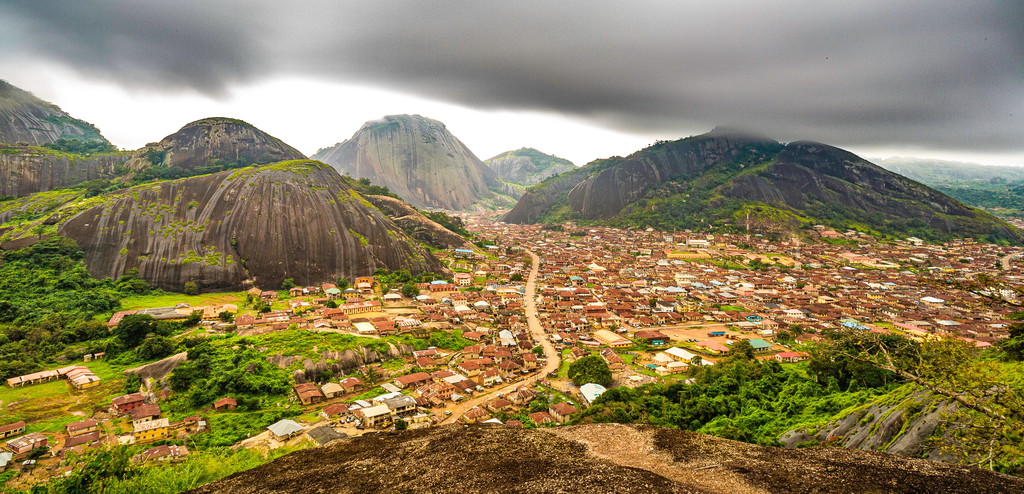
Nevertheless, there are miles upon miles of nature to explore, with tropics, grasslands, highlands, and more all within its borders, the country itself a patchwork of various Sub-Saharan west African ecoregions.
Among its diverse landscape are, as mentioned, 2,130 named peaks, spread all throughout the country. The tallest of these is Chappal Waddi at 2,421m/7,943ft and 1,157m/3,796ft of prominence, though that is beaten by the most prominent mountain of Shere Hills at 1,314m/4,311ft of prominence.
Nigeria sits in West Africa along the Gulf of Guinea, at the junction of Benin to the west, Niger to the north, and Cameroon and a sliver of Chad to the east. The country is separated into several main climate categories, mainly along latitudinal lines; the majority of land is classified as tropical savannah, with arid steppe to the north and arid desert even further north, alongside tropical monsoon climate to the south and tropical rainforest along the coast.

The tropical monsoon climate hovers around a narrow temperature range typically within the high 20s Celsius (70s-80s Fahrenheit), regardless of the time of year. It takes its name from the monsoons formed in the South Atlantic Ocean, whisked to Nigeria by the seasonal winds of the maritime tropical air mass. Warm and humid, rainfall is a staple of the climate even outside of occasional monsoons.
Southern Nigeria as a whole is marked by intense rainfall, especially in the Niger delta area, and especially during the two rainfall maxima seasons, separated by one short dry season and one longer dry season. The first rainfall peak lasts from March to June, with a shorter peak occurring in most of August.
North of this tropical monsoon climate is the tropical savanna, encompassing most of central and western Nigeria. The tropical savanna likewise has a wet and a dry season, but has more of a temperature range than that of the tropical monsoon, as temperatures from 18.45 °C/65.21 °F to 36.9 °C/98.4 °F can be found in the central Nigerian city of Abuja, the country’s capital.

During the tropical savanna dry season, Harmattan winds contribute to the hot, arid, and dusty climate. Aridity increases as the country expands northward into the desert, becoming a tropical dry climate, where the rainy season only lasts three or four months, and temperatures are even higher than the tropical savanna.
But alongside around 2,130, there is an undeniable presence of highlands as well, where the climate is akin to that of a cool alpine or mountain climate. The Adamawa highlands and the Mambilla, Jos, and Obudu Plateaus are some of the notable highland areas, mostly situated in the southeast bordering Cameroon but interspersed elsewhere as well.
The major water features of Nigeria are the Niger River and its tributary Benue River, with the Niger River the most important river of all of West Africa. It discharges through the aforementioned Niger Delta into the Gulf of Guinea.

The capital of Nigeria, as mentioned, is the central city of Abuja, but the largest city is that of Lagos, on Nigeria’s western coast. Abuja is part of its own subdivision known as the Federal Capital Territory, while the rest of the country is split into 36 more subdivisions.
The extensive geological history and profile of Nigeria has resulted in a wealth and diversity of natural resources. Mineral deposits are scattered across the country, including, zinc, gold, lead. tin, and niobium, but large-scale production is mainly focused on the last two. A lignite belt in southern Nigeria, feldspar, kaolin, and gypsum are other mineral resources available in Nigeria.
The Nigerian economy relies heavily upon its oil reserves and petroleum production, though it is home to large quantities of natural gas as well. Nigeria used to depend upon coal for energy, but the industry gradually declined around the 1960s, and is no longer ubiquitous.

As for Nigeria’s geologic history itself, its roots begin around 3,000-4,000 mya in the Precambrian period, specifically the Archean or Proterozoic, during which time the Benin-Nigeria orogen formed a crystalline basement rock that constitutes Nigeria, known as the Nigerian Province.
The specific rock make-up is divided into thrust and shear zones, with 50% of Nigeria’s area composed of the Migmatite-Gneiss Complex. This complex includes Archean gray gneiss as well as schist, migmatite, garnet, sillimanite, kyanite, and staurolite, indicating intense metamorphism in the region.
In southwestern Nigeria, specifically around the Ibadan area, metamorphosed banded gneiss, quartzite, schist, and layers of amphibolite make up much of the profile, the result of intense deformation during the Liberian orogeny and the Eburnean orogeny later on.

Schist belts in the southwest and northwest are likely the remnants of paleo-rift systems, like the Pan-African orogeny, which would have impacted the geology of these regions greatly. This orogeny also helped form intrusions of granite, syenite, and diorite.
Later, during the Mesozoic 251-66 mya, ring complexes formed and encroached upon older rocks in the Jos Plateau, located in central Nigeria. These ring complexes were marked by large quantities of minerals, mainly tin and niobium, two of Nigeria’s major mineral exports.
The Mesozoic was also the time during which large sedimentary basins formed in the south, to be filled during the Cretaceous. These basins contain mixtures of sandy shale, sandstone, sandy limestone, and various fossils.
Fossils can also be found in various other geologic formations throughout Nigeria, such as the Eze-Aku, Mamu, and Nsukka Formation, helping date them to various ages within the Cretaceous period. Other formations, like the Odukpani, Awgu, or Nkporo, are more characterized by their shales, limestones, and sandstones.

Around the same time that these formations came to be, Nigeria faced intense sea level rise, specifically during the Maastrichtian age, at the tail end of the Late Cretaceous. This would continue to the early years of the Cenozoic, resulting in geologic formations of thick marine sediments.
This was relatively brief in the geologic timespan, however, and in the Eocene, the second epoch of the Cenozoic, sea levels decreased. From then on, any sedimentation in Nigeria was terrestrial rather than marine, as it had been for millions of years.
With a diversity of climatic and geologic regions, it is no wonder that Nigeria is home to a diversity of ecosystems as well, from the wet and lush to the dry and sparse.
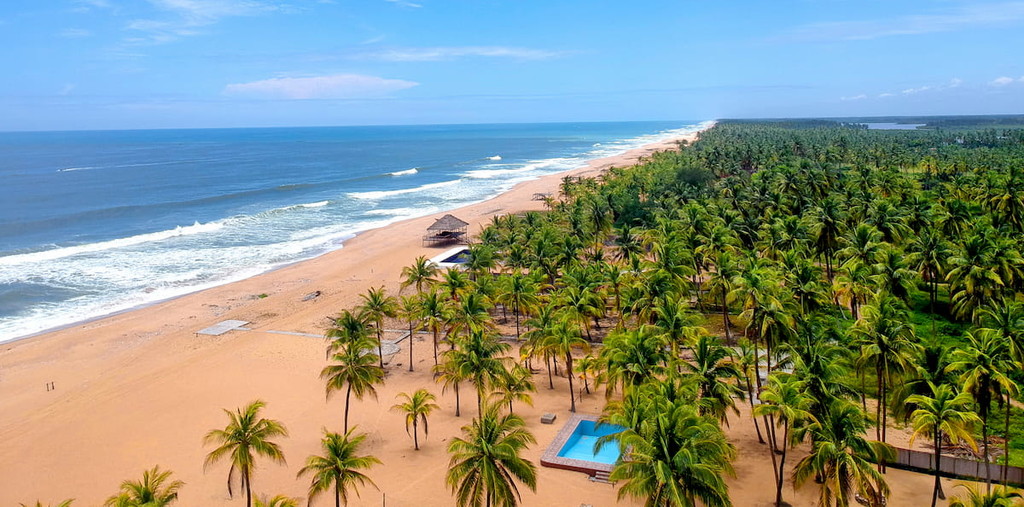
The former is well represented by the Central African mangroves that run across Nigeria’s coast and the Niger delta, part of the largest mangrove swamp on the continent. Thriving in the humidity, these mangroves can grow around 45m/148ft tall, and are critical in holding rivers together, allowing for fertile and nutrient-rich soil as they filter the water.
Mangrove swamps are popular homes for a variety of invertebrates such as crabs, oysters, and abundant fish species, as well as African manatees, African softshell turtles, striated herons, reed cormorants, and many birds that stop by during migration.
In the southeast are the Cross-Niger transition forests, near the Cross-Sanaga-Bioko coastal forests. Much of these forests have been decimated due to the dense population of the areas it covers, though there are still enclaves of its once-luscious forest cover where crested chameleons and Sclater’s monkeys can be found.
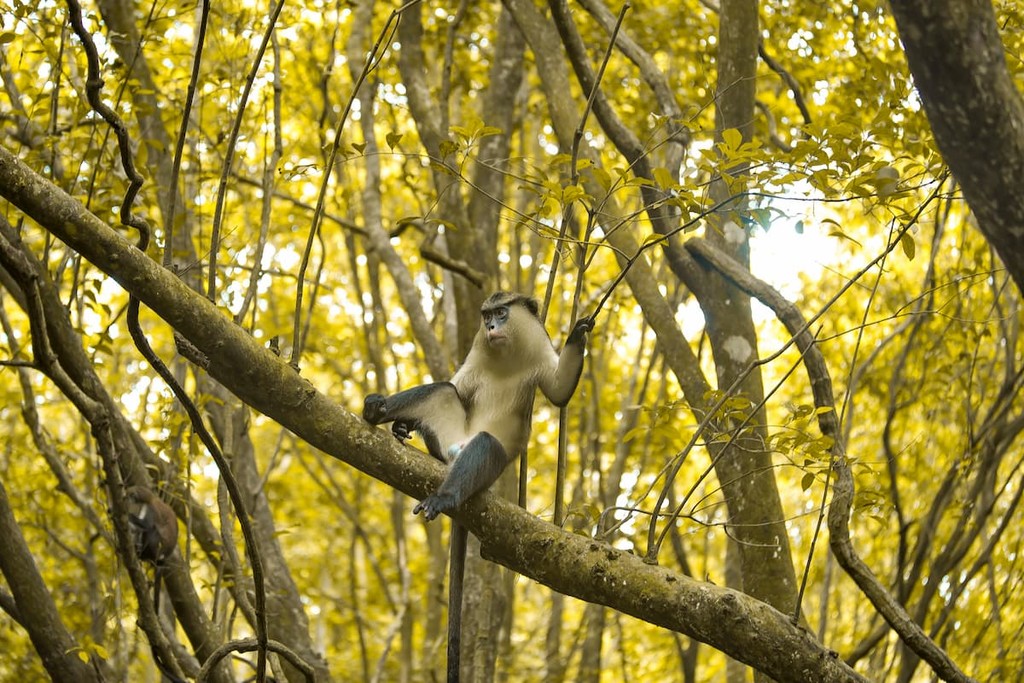
The Cross-Sanaga-Bioko coastal forests, meanwhile, are characterized by their heavy rainfall and diverse ecosystems. Cross River gorillas, chimpanzees, Preuss’s red colobus, and endless other primates claim this region as home, alongside reptiles and amphibians like the Goliath frog, an abundance of butterflies and birds, and countless endemic plant species.
Along the Cameroonian coast are the Cameroonian Highland Forests, where lower elevations are met by forests such as the tropical broadleaf Cross-Sanaga-Bioko coastal forests and the tropical and subtropical grassland/forest/savanna of the Guinean forest-savanna mosaic. Higher elevations house montane forests and grassland, as well as bamboo forests and subalpine grasslands.
These habitats are home to afromontane flora such as the brittlewood tree, African cherry and Cape beech. As for the region’s rich and diverse fauna, there are many species endemic to the ecoregion, like the Bangwa forest warbler, Mount Oku hylomyscus, or highland long-fingered frog, alongside significant endangered primates like the Cross River gorilla or Preuss’s monkey.
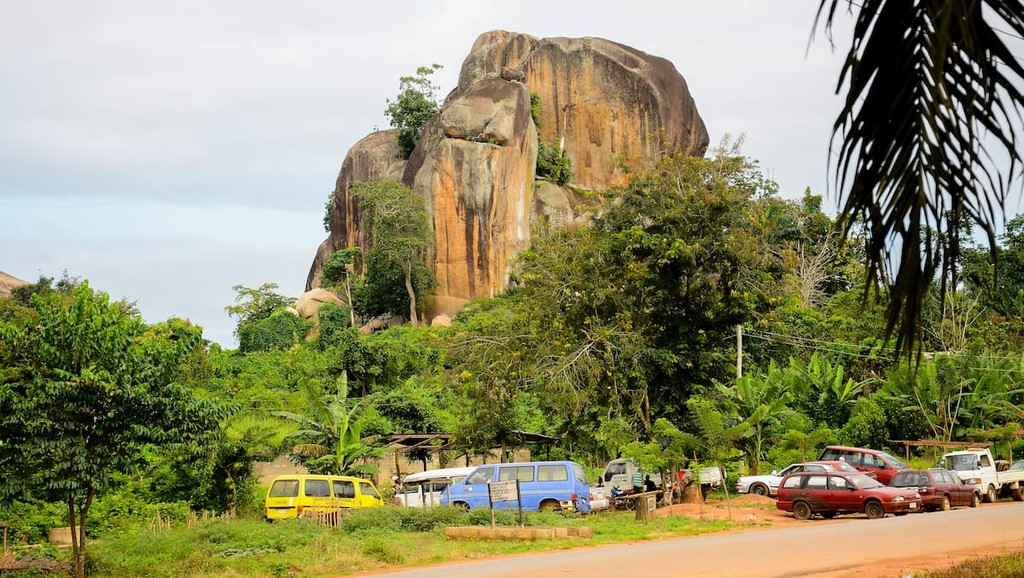
To the northwest is the West Sudanian savanna, a tropical savanna that melts into the Sahelian Acacia savanna. The West Sudanian savanna is marked by long grasses, herbs, shrubs, typical savanna trees like bushwillows and Terminalia, and dry woodland trees like the acacia and Egyptian balsam. Large mammals like the African bush elephant, West African giraffe, lion, cheetah, and other staples of the region roam the savanna, albeit often in limited numbers.
And, of course, there is Sahel, the semi-arid stretch that delineates the transition to the Sahara. It is similar to the West Sudanian savanna in having a mixture of grassland and woodland, albeit with a more arid climate allowing for growths of desert shrubs. Grazing mammals like the oryx or gazelle are prominent, as well as many of the same predators as the West Sudanian.
The aforementioned Guinean forest-Savanna Mosaic takes up quite a large swath of land through central Nigeria, marked mainly by its grasslands and tree populations along rivers and hillsides. This ecoregion separates the humid tropical forests of southern Nigeria with the drier West Sudanian savanna to the north, as frequent fires prevent further tree development.
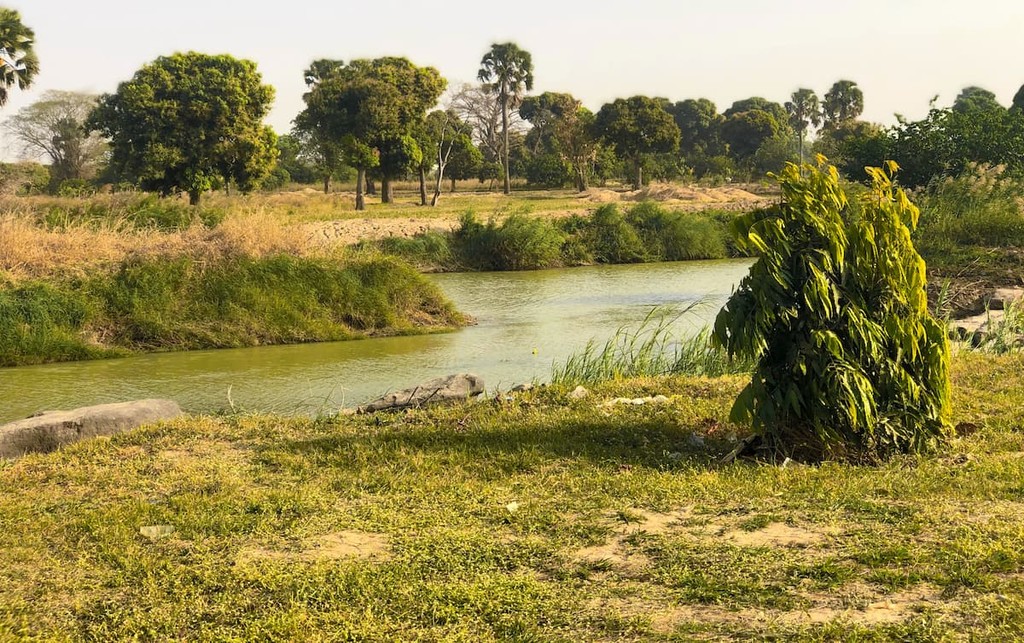
Thus, a particularly notable tree species is the dwarf red ironwood, which tends to be more resistant to wildfires. The forests and grasslands provide habitats to many large, notable mammals, like the hippopotamus, African leopard, and antelopes, and a true wealth of birds.
Nigeria has an extensive archaeological history, having been the site of many thorough excavations for quite some time. Research by English archaeologist Charles Thurstan Shaw suggests human presence in southeastern Nigeria as early as 100,000 years ago, though evidence of long-term habitation and settlement would not come until much, much later, likely until 6000 BC.
Interestingly, the oldest boat discovered in Africa was discovered in Yobe State, Nigeria, estimated to be around 8,000-8,5000 years old. Similarly, the oldest known human skeleton fossil in West Africa, dated to be around 13,000 years old, was found in the Nigerian state of Ondo.
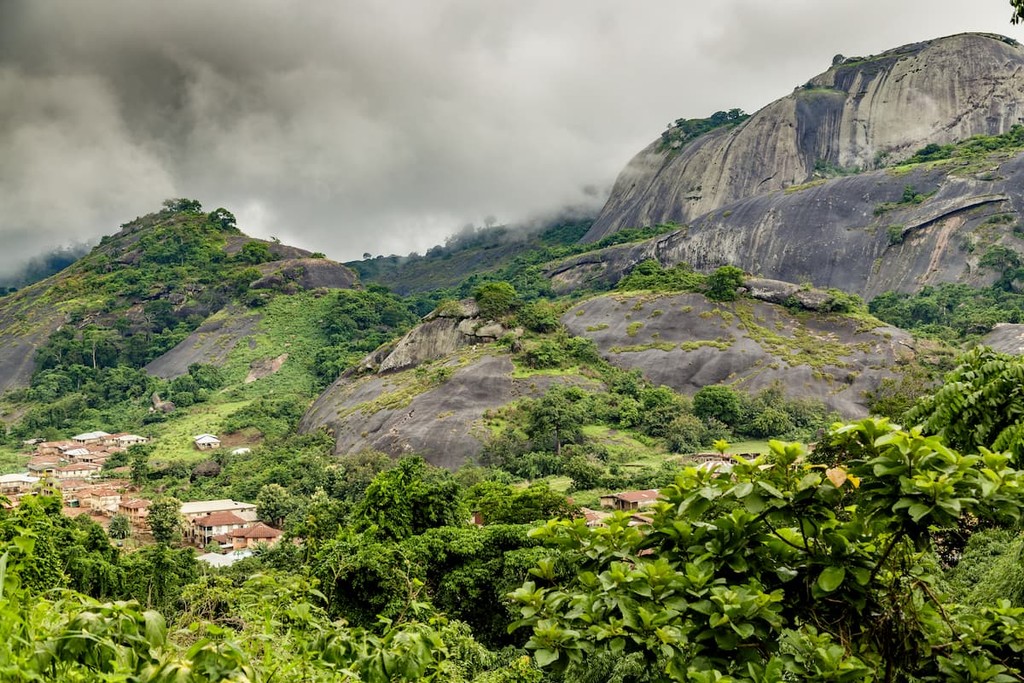
Evidence also supports the existence of microlithic and ceramic industries beginning around 4000 BC, instituted by savanna pastoralists and succeeded by the growth of agricultural communities, a parallel development to the transition from hunting-gathering to farming in southern Nigeria.
The Nok culture of 1500 BC - 500 AD was one of the most significant Iron Age civilizations of Nigeria, particularly notable for their terracotta figures and use of iron smelting, which was likewise common around Nigeria at the time.
What would become Nigeria in the modern age was, for a long time, a collection of different states associated with a variety of ethnic and cultural groups, and many of these groups continue to be a prominent part of Nigerian culture and demographics today.
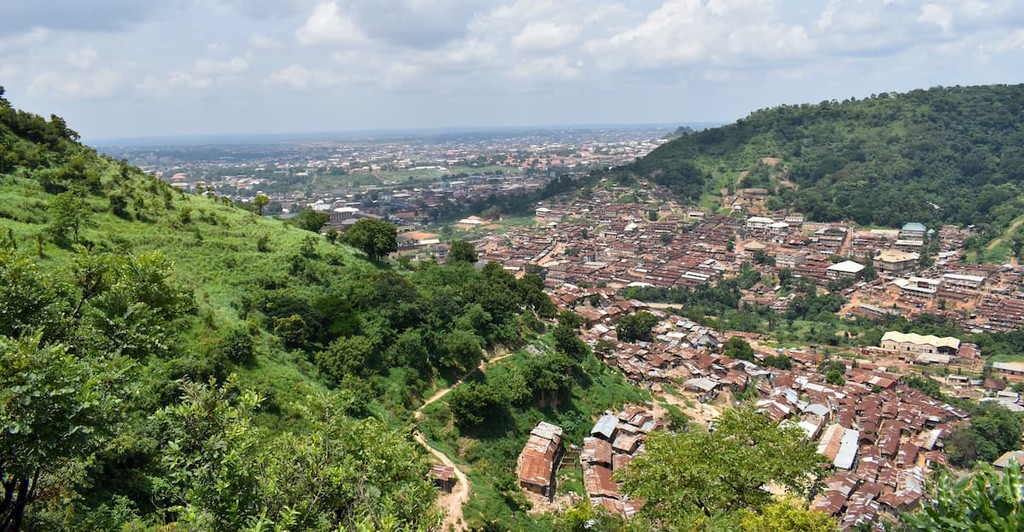
The Kingdom of Nri, for example, came to prominence during the 900s, exhibiting control over a portion of Igboland (southeastern Nigeria). They reached their peak of influence during the late 16th century, but faced decline in the 18th century. That was in part related to their refusal to engage in slavery or the slave trade that was growing at the time, having long been seen as a haven for former slaves and ostracized peoples.
Igboland was home to many other cultures and peoples as well, hosting even today an abundance of indigenous tribes and communities that contribute to the diversity of Igbo culture.
The first millennium AD also saw the shaping of Hausaland, a collection of states run by the Hausa people. They became large trading centers in the 1400s with many important exports, and also became an significant site of Muslim influence in West Africa around the time as well. Today, around 30% of Nigeria’s population are considered Hausa, with their cultural center in the city of Daura.
The Yoruba people, who today comprise about 20% of Nigeria’s population, stemmed from the namesake Yorubaland in southwestern Nigeria. The Yoruba Kingdom enjoyed time as a dominant power in the region for centuries, and were known for their extensive and well populated urban centers.

Though their power as an empire weakened with British colonization and military invasions, the Yoruba people continue to have a great cultural impact in southeastern Nigeria, especially in the city of Lagos. Numerous other kingdoms, states, and cultures were established during the times of the aforementioned peoples, with many continuing to prosper in the modern day.
Nigeria’s pre-colonial era saw the arrival of Portuguese explorers in the 16th century, who traded with the peoples of southern Nigeria. Although goods were common trade items, Nigeria’s coast also became the location of many massive slave trading posts. Various kingdoms in Nigeria were involved in the transatlantic slave trade, with slave routes linking Nigeria’s interior to the coast.
Some kingdoms, like the Oyo Empire, reached their zenith during this pre-colonial era. The Benin Empire (not to be confused with the country of Benin), Aro Confederacy, and many others were also prominent during this time.
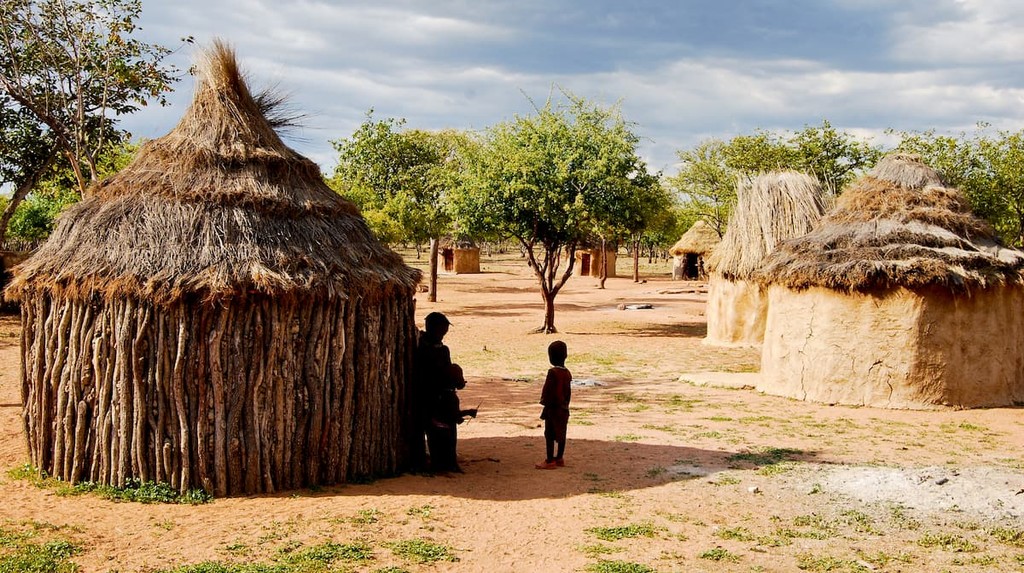
The Hausa peoples, meanwhile, were affected by frequent conflicts and struggles, and the Fulani people, led by Usman dan Fodio, defeated the Hausa Kingdoms during the Fulani War of 1804-1808, establishing the Sokoto Caliphate of West Africa. This would become one of the biggest pre-colonial African states, but would be broken up into various European colonies during the Scramble for Africa.
Great Britain had long been involved in West Africa, claiming a sphere of influence in the region in 1885 that would precede and foreshadow the aforementioned scramble. The British Royal Niger Company would subjugate many Nigerian kingdoms during this time, and in 1900 its acquisitions would become under direct British control, establishing the Southern Nigeria Protectorate.
Britain itself had also been involved in wars and territorial conflicts in Nigeria, such as the Anglo-Aro War, the destruction of the Benin Empire, or the rise of the British-powered Borno Emirate in place of the Bornu Empire.
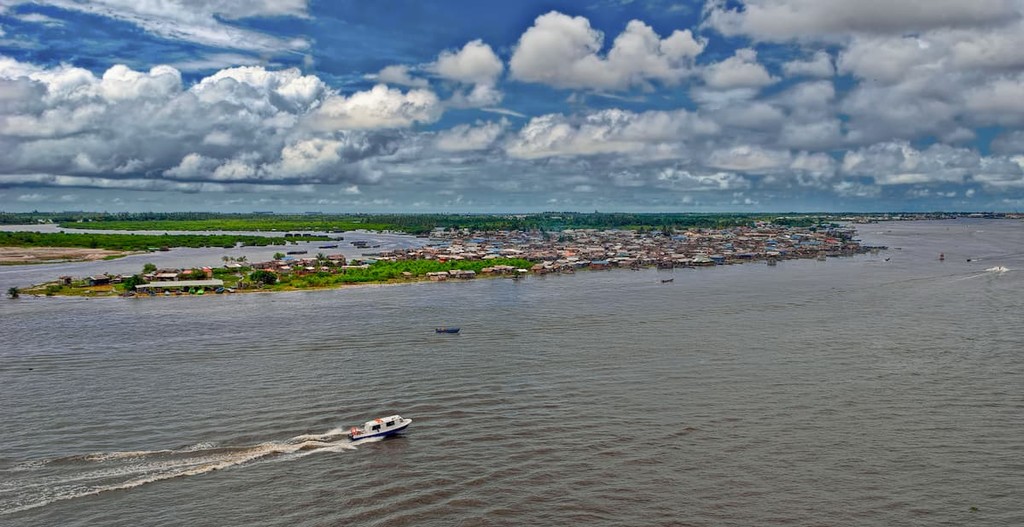
Britain had acquired various colonies and territories, which would start to be united in 1914 into the Colony and Protectorate of Nigeria. Nigerian independence, however, increased in importance for the Nigerian people over time, and by 1960, independence was finally achieved.
The diverse and vast ecosystems of Nigeria have resulted in fairly large-scale ecotourism and adventure tourism to the country. There are several vast national parks and reserves throughout the country, encapsulating the essence of its many diverse and stunning ecosystems.
One of the most popular tourist destinations in Nigeria is the Yankari National Park, known for its warm water spring, grasslands, presence of large mammals, and hundreds of bird species that either reside or migrate to the park’s lands. The springs are an ideal place to observe this plethora of flora and fauna life, while hiking up Kalban Hill is optimal for stunning views of the park and the chance at seeing animal herds.
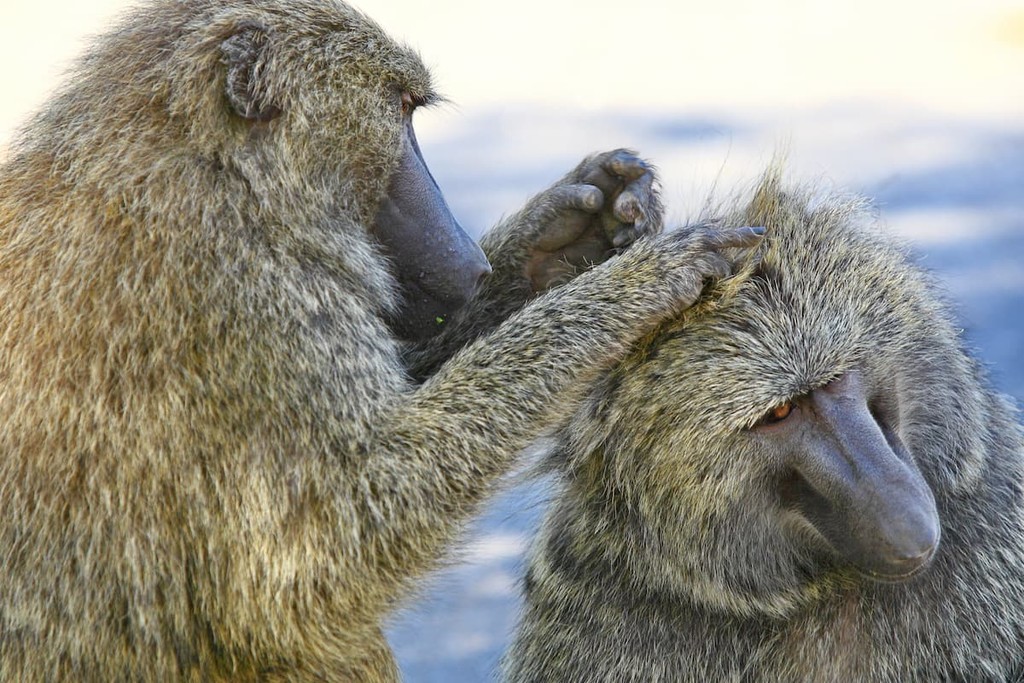
Yankari also boasts a large tourist center and resort known as the Wikki Camp, the most convenient location for visitors looking to stay overnight and the base from which the safari trips depart. Other notable places to see in Yankari are the wildlife museum and the massive Marshall Caves.
The biggest of Nigeria’s national parks is the Gashaka-Gumti National Park, located in one of the most remote parts of Nigeria. Great variation in elevation has resulted in rugged terrain and landscapes ranging from savanna grasslands to montane forests to steep slopes and valleys.
It is recommended for prospective visitors to get in touch with the Gashaka Primate Project or a guide company that can best guide one on hikes through the mountains (Chappal Waddi, Nigeria’s tallest mountain, stands within the park) or along the rivers, where the chance of seeing unique west African wildlife looms.
Another large park is the Cross River National Park, whose exceptional rainforests and mangrove swamps have deemed it a biodiversity hotspot. The park has been affected by illegal logging and poaching, while also being at the center of land disputes between the native peoples and the government.
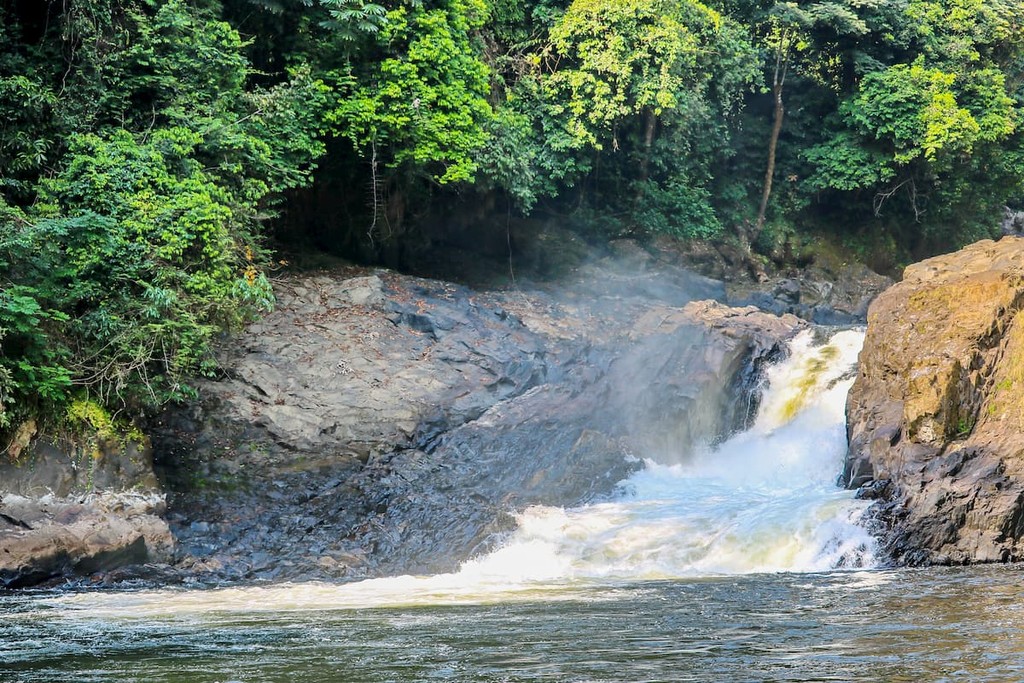
Nonetheless, ongoing ecotourism investments have strove to make the park a prime location for outdoor activities such as hiking, mountaineering, and gorilla tracking. The nearby Kanyang Tourist Village is the main base from which visitors can access the park, and is seemingly under ongoing development.
On the other side of Nigeria, toward the east, is Kainji National Park, consisting heavily of savanna and centered around the Kainji Lake. Tours and sightseeing are commonplace in the park, which is estimated to house 65 mammal species, 350 bird species, and 30 species of reptiles and amphibians, contributing to a reputation as a center of biodiversity in Nigeria.
The West Sudanian savanna can be seen in great effect in Kamuku National Park, where antelopes, monkeys, warthogs, elephants, and more may roam. Hikes to the Dogon Ruwa Waterfalls, the unique Goron Dutse inselberg, and the Tsaunin Rema Hill capture some of the most prominent features of the area. Many of these natural features are of particular cultural importance to the local Gwari and Kamuku people who live in and around the park.
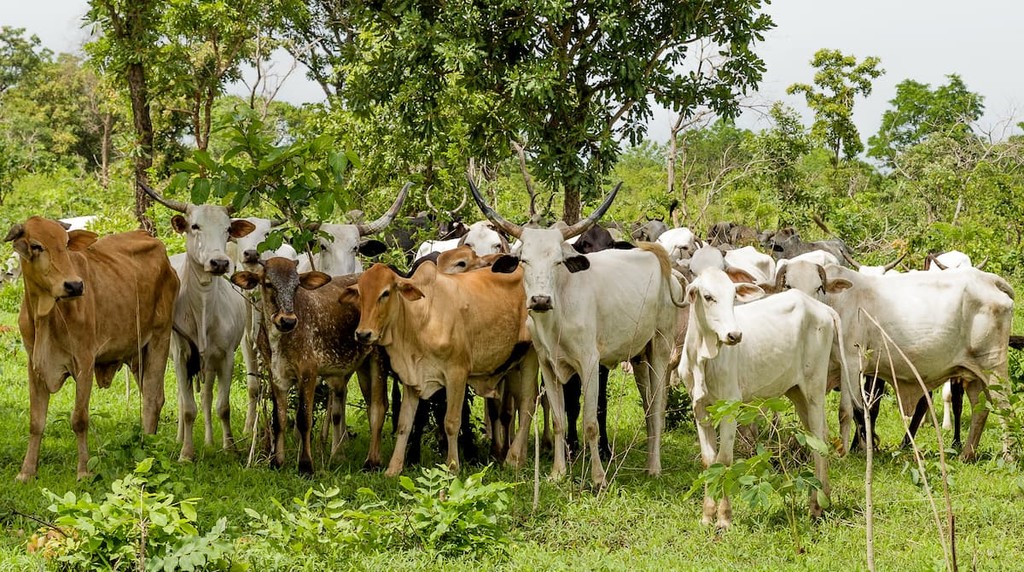
The Old Oyo National Park in Oyo, named after the ancient Oyo Empire of the Yoruba people, is prominent both in its natural richness and in its great archaeological history, where some of the walls and structures of the Oyo Empire’s capital city can still be seen.
Alongside many hiking and trekking opportunities, with scenes such as the Agbaku Cave, Gorge Lake, and numerous rivers and waterfalls, the park center is also host to a variety of mountaineering activities, with the Kosomonu Hill also an option for hill-climbing or mountaineering.
Though it is the smallest of Nigeria’s national parks, Okomu nonetheless has much to offer, being the habitat for many endangered species that rely on the area for preservation. Like much of Nigeria, dozens of mammals and over a hundred birds claim the lowland rain forests of Okomu as a home.
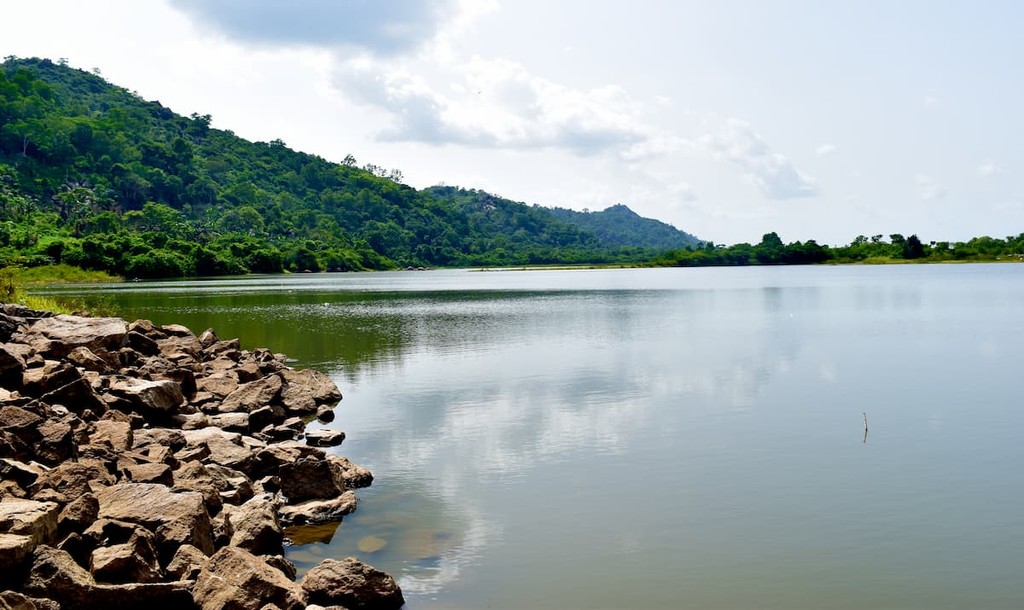
There are many marked trails and even two tree houses for birdwatching and observing the landscape of the park. Guides or interpreters can also be hired to accompany and inform visitors on their explorations.
Just outside the intense hustle and bustle of the city of Lagos is the Lekki Conservation Centre, a nature reserve dedicated to protect the Lekki peninsula wetlands and their abundance of diverse flora and fauna. Monkeys, lizards, birds, and many endangered amphibian species abound in the reserve, which can be seen from the vantage of the raised walkways woven throughout.
Most famously, Lekki is home to the longest canopy walkway in Africa, at around 400m/1,312ft long and stretched far above the ground below. Of course, there are terrestrial hiking trails as well, providing intimate sights of the lush swamps and mangroves of the reserve.
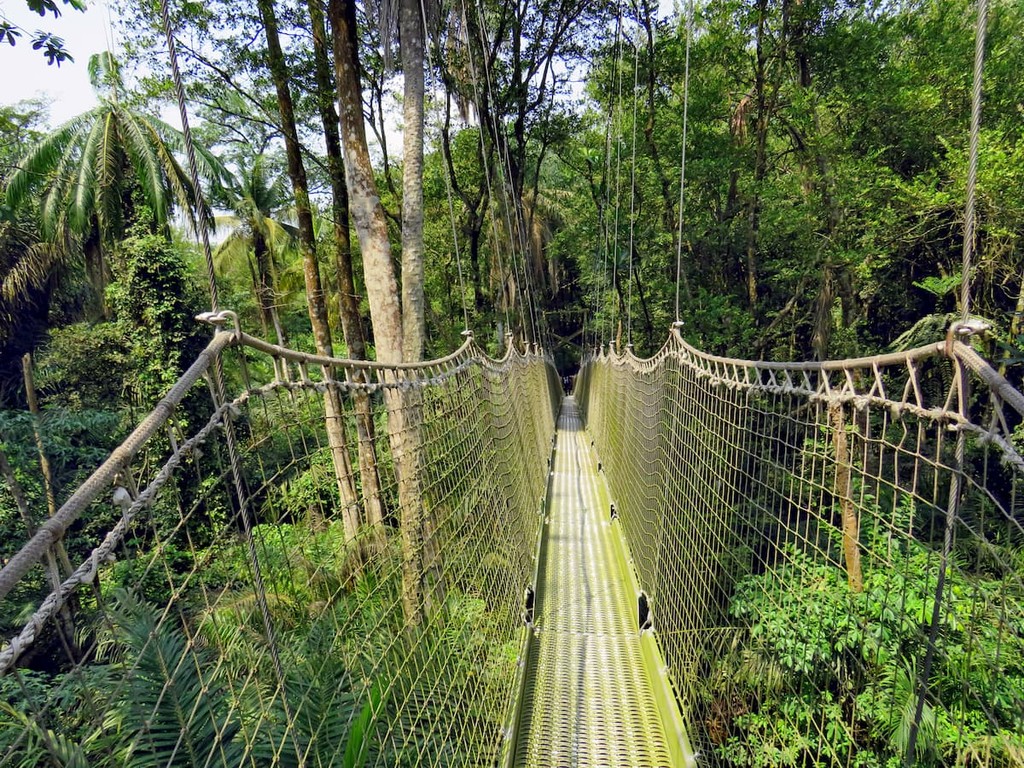
Even outside of national parks and reserves, there are many opportunities for hiking in Nigeria. One of the most popular is Olumo Rock, which has great historical significance to the Egba people and religious significance to the Yoruba in general. A tourist complex stands next to the mountain, with hiking trails available that lead up to its highest peak.
In central Nigeria, by the Jos Plateau, stands the prominent Shere Hills, sprawling across the land in a series of massive rock formations. The hills have a number of access routes leading to a challenging but rewarding hike to the top, upon which the whole city of Jos can be seen.
The Idanre Hills, meanwhile, comprise the dramatic backdrop of the town of Idanre. A series of almost 700 steps helps lead visitors up the slope, after which are sequences of level trails and steep bare rock.
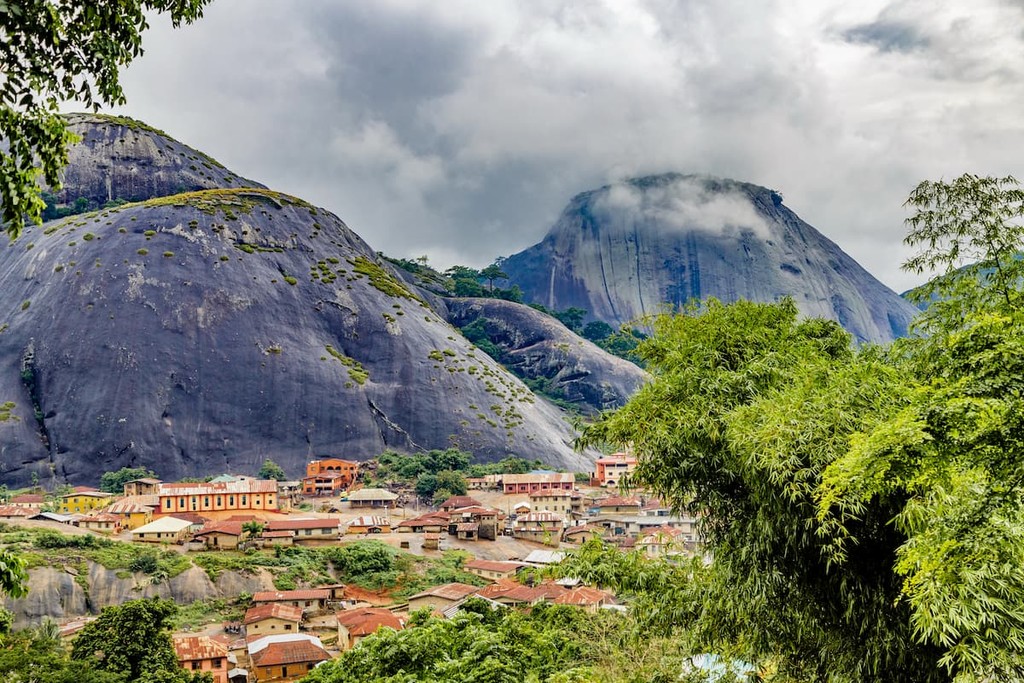
The city of Lokoja boasts the Mount Patti Hill, a 458m/1,503ft tall mountain famous for its serene views of the country below, which inspired British writer Flora Shaw to coin the name “Nigeria.” A winding pathway guides to the mountain’s peak, where such views can fully be understood.
Mountains, hills, and rock formations are not the only opportunities for climbing, as Nigeria is also home to many beautiful waterfalls, such as the seven-part Olumirin Waterfall in Erin Ijesha. Climbing the waterfall can take around four to five hours, with brilliant views available all the way up.
Truly, there are endless opportunities to list, which are impossible to encapsulate at once. For any prospective hiking location, it is important to check whether they are best travelled with guides or, in some cases, only allowed to be travelled with guides, and this may be necessary to research and book in advance.
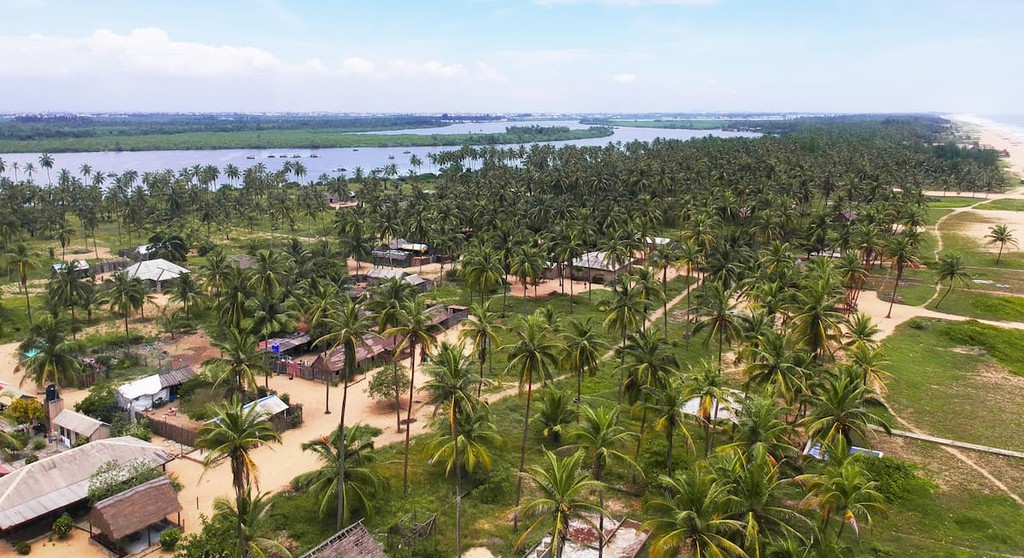
As the 7th most populous and 42nd densest country in the world, it is no surprise that Nigeria is home to many immense urban areas with significant populations and political impact. Outside of the cities mentioned, Kano, Ibadan, Port Harcourt, and Benin City are some of the other largest urban areas of Nigeria.
Located on the beaches of the Gulf of Guinea, Lagos is not just the largest city in Nigeria, but the largest city on the African continent; while population estimates vary, the metropolitan area is said to have around 20,000,000 inhabitants. Re-modernization efforts in recent years have increased the flow of tourism into the city as it has become a greater economic and cultural powerhouse of west Africa.
Endless cultural, arts-based, and food-based festivals attract visitors from around the world, epitomizing a rich artistic and cultural tradition. The Nike Art Centre of Lagos exemplifies the richness of Nigerian art, while the New Afrika Shrine does so for the richness of Nigerian music, having been established by pioneering Nigerian musician Fela Kuti. As for food, Lagos is a premiere place to experience Nigerian cuisine, with a diversity of unique indigenous delicacies.
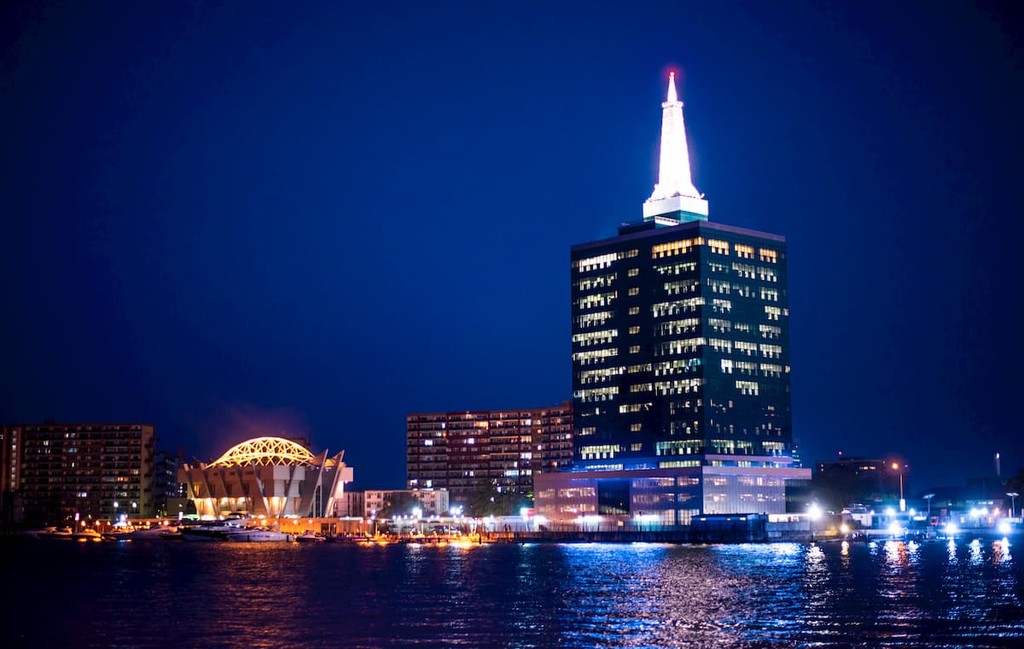
Lagos’ position on the coast means it boasts many sandy beaches with numerous beach resorts, with the most notable perhaps being the Elegushi Beach, though the small island of Tarkwa Bay has become an increasingly popular surfing location. Outside the resorts, there are many large hotels ideal for tourists.
The size and spread of Lagos has resulted in one of the biggest and most intricate road networks in West Africa, with highways and bridges linking the parts of Lagos to one another and to the rest of Nigeria and, even further, Africa as a whole, with the Trans-West African Coastal Highway and the (almost complete) Trans-Sahara Highway both using Lagos as an endpoint.
A bus system, ferry services, and an under-construction urban rail system also make up Lagos’ transportation efforts, as well as the Murtala Muhammed International Airport, one of the biggest airports in Africa and one of the busiest.
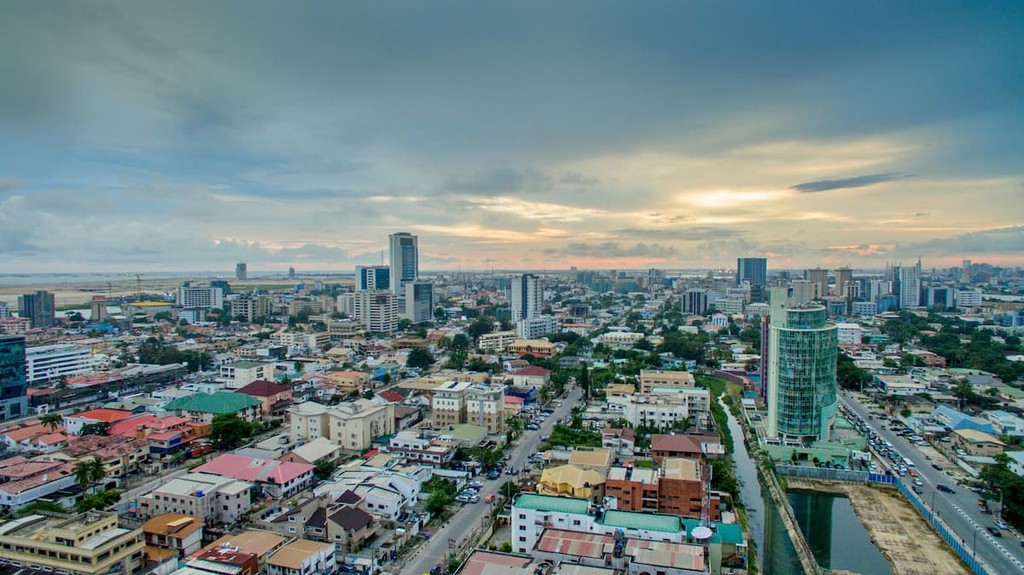
Though it is not the most populous city of Nigeria, Abuja has great importance as its capital and as one of the wealthiest urban areas in the country. Alongside its many landmark buildings, such as the Millennium Tower, National Stadium, Central Bank of Nigeria, and Nigerian Presidential Complex, Abuja also boasts many large green spaces and natural wonders.
The Millennium Park is the largest of these, with vast green spaces and meticulously planned and maintained vegetation. Gardens, greenhouses, and fountains comprise the park, which is one of the major attractions of Abuja. Abuja is also in close proximity to Zuma Rock, a massive monolith that towers from afar, and the Aso Rock outcrop, which can only be hiked with proper governmental clearance.
The Jabi Lake is also a major tourist destination, with a nearby shopping mall and amenities like sports courts, boat rides, fishing areas, and a general recreational park. Alongside many outdoor markets, and shopping centers, Abuja hosts a monthly market known as the Designers Market Place, where artisans and vendors showcase and sell all sorts of handicrafts. The Abuja Arts & Crafts village serves a similar function, an ideal location for purchasing local goods.
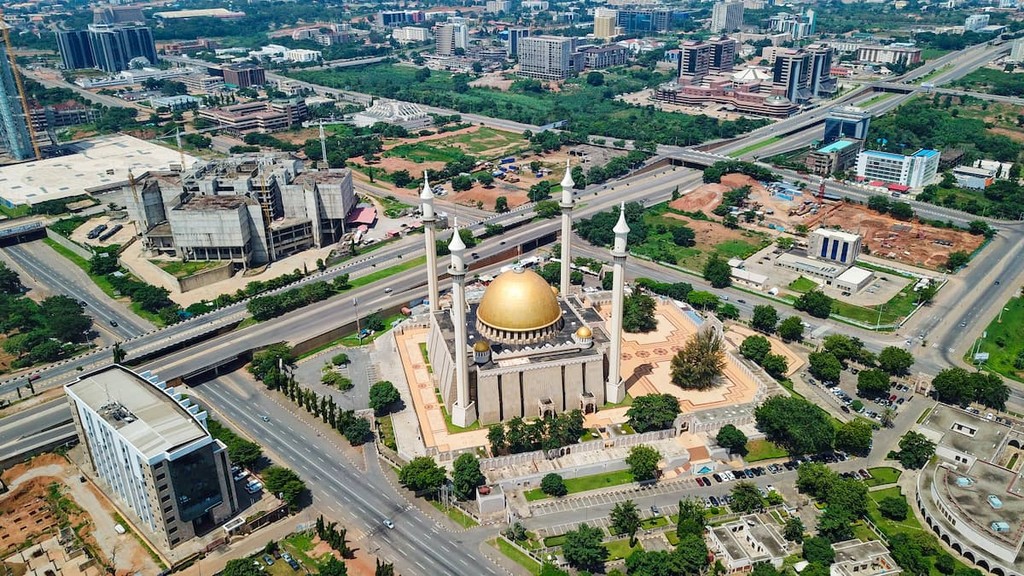
There are many large hotels throughout the districts of Abuja, and the city can be accessed through international or domestic flights to Nnamdi Azikiwe International Airport, several different highways, and the recent Lagos-Kano Standard Gauge Railway, which is currently partially finished.
Explore Nigeria with the PeakVisor 3D Map and identify its summits.








